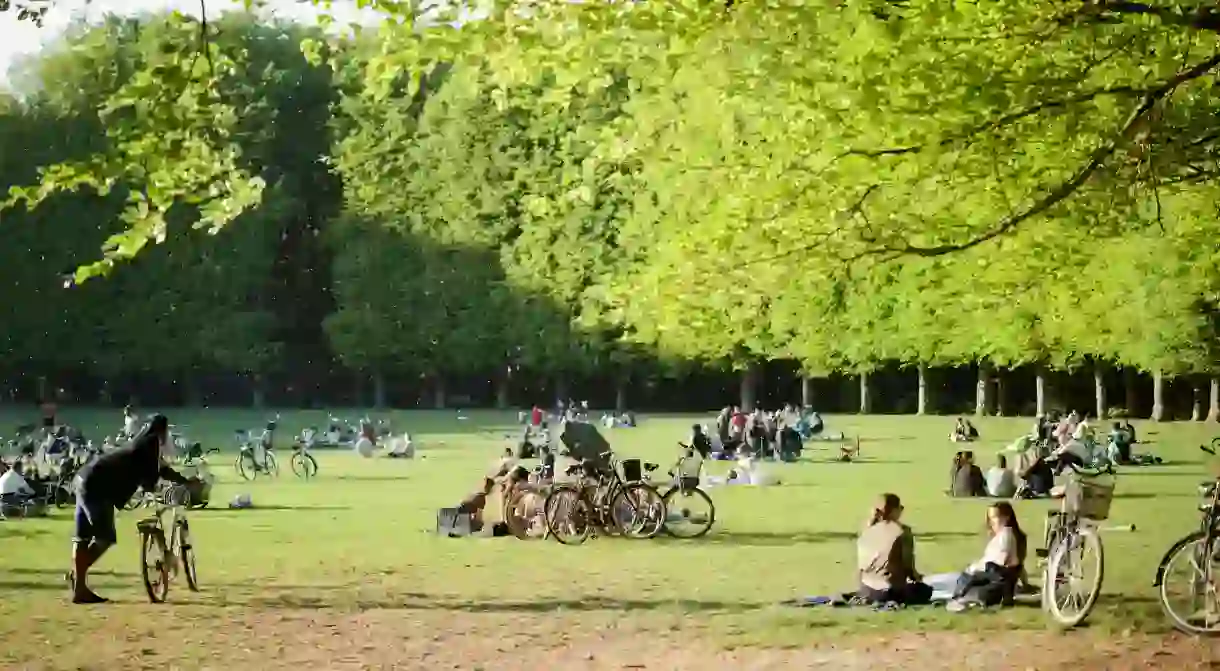How to Travel Around Malmö Sustainably

Travelling sustainably in one of the greenest cities in Europe seems easy enough to do. From using biogas from food waste to power buses and building the first-ever botanical roof garden, you can’t really go wrong in a city already teeming with initiatives. But for the environmentally conscious traveller, there are still plenty of ways to be mindful while visiting.
Malmö is a city with huge ambitions to become carbon neutral and truly sustainable. It was awarded first prize in the Liveable Communities award 2007, the UN Scroll of Honour 2009 for its holistic approach to becoming an “eco-city” and the prize for Swedish Fairtrade City of the Year 2012. Malmö has also pledged that by 2030, the whole of Malmö will be supplied with 100 percent renewable energy. These are big claims for a small town. This guide will show you how to travel around Malmö in the most environmentally friendly way possible.
Sustainable urban architecture
Malmö wasn’t always so green. Until the 1980s, Malmö was traditionally an industrial city, and the ghost of its industrial past is still keenly felt in its landscape. From Daniaparken to the Turning Torso, there’s plenty of brutalist and urban architecture to enjoy, but look closer and you’ll see the green initiatives they’re now playing host to.
For an example of this, sustainability moderator and lecturer Catarina Rolfsdotter-Jansson recommends starting your tour at Western Harbour, as “the area is symbolic of what has happened in Malmö. When construction took place for a housing exhibition in 2001, it was a partially abandoned industrial area, sited on landfill. The area is now globally unique, with 100 percent locally produced renewable energy, pneumatic refuse collection systems to minimise heavy traffic in the area, low energy consumption in homes, green roofs and other green initiatives to keep the level of biodiversity high, despite the dense urban landscape.”
Pedal power
Due to its small size, Malmö is easy enough to explore by foot, but really, it’s a city built for avid cyclists. As Rolfsdotter-Jansson explains, “as the city has 500km (311mi) of cycle tracks and is almost completely flat, it can easily be explored by bike.” There are plenty of bike rental options, from local independent bike shops to easy bike-share apps such as Donkey Republic or Malmö By Bike.
City tours
Green Bike Tours offer bike and walking tours, plus site visits that provide a detailed look into the various environmental and community initiatives around the city. The company website states it’s on “a mission to tell and educate people on how cities fight climate change and become livable. Through our bike and walking tours, lectures, site visits and workshops we create consciousness. We give you something to think about and take with you back home, small tips and ideas about how you yourself can change your own behaviour and lower your carbon footprint”.
Stay hydrated
Water waste and single-use plastics have plagued the consciences of the public for the past few years. It’s a problem thrown into sharp perspective when travelling, as reusable water bottles eventually become empty and thirsty explorers often end up purchasing water in lieu of finding safe drinking water readily available. In Malmö, tap water is perfectly safe to drink and most public toilets have a cold tap for refilling water bottles.
Eating sustainably
With such a wide range of international cuisines available in the city, there are plenty of restaurants to choose from, despite its small population size. However, if you are specifically looking for somewhere green and sustainable, the city has a number of options. Restaurant SPILL is a lunch-only spot that is dedicated to the eradication of food waste. So much so, it buys surplus produce from suppliers to form more than 90 percent of its menu. The idea behind the business model being that it will drive itself out of business with changing attitudes about food waste.
For dinner, restaurants practising the guiding principles of the sustainable New Nordic food movement are a sure-fire way to know you’re eating seasonal, local and organic food. Lyran is a great example of this, as it works closely with small-scale producers from Southern Sweden to achieve its simple, yet delicious menu.
Learn about biodiversity and seasonal produce
Submerge yourself in Malmö’s green innovation with a visit to the Augustenborg Botanical Roof Garden. Explore the 9,500-square-metre (102,000-square-foot) rooftop green space on top of the Department of Internal Services with 20 patches built for inspiration, research and education. The rooftop features an urban farm, a test-site for future green roof products and a biodiversity refuge for rare plant species.
Another green space to discover is Slottsträdgården, one of the city’s many parks located behind the castle Malmöhus and with a garden growing and selling seasonal, organic produce.
Conscious consumerism
As always, it’s best to buy quality and traceable goods from independent and local designers, so while in Malmö try to avoid buying souvenirs from tacky gift shops selling viking-horn cups and fridge magnets. Instead, put your money into conscientious Nordic designs that use recycled and sustainable materials. Sweden also has a strong vintage and second-hand clothing scene too, which can be expereinced at Beyond Retro located in Mitt Möllan. Bring back a taste of Swedish style without the guilt of buying new products.
Strength in numbers
Beyond its admirable commitment to becoming an eco-city, Malmö is a force for good when it comes to community initiatives that engage its diverse population – Rolfsdotter-Jansson states, “over 50 percent of children under five have at least one internationally-born parent”. To fully appreciate how Malmö has transformed its urban landscape while focusing on the needs of a diverse community, she suggests a trip to Stapelbäddsparken, “one of the world’s leading skateboarding ramps, [where] children and young people from different cultures meet to skate together”.













